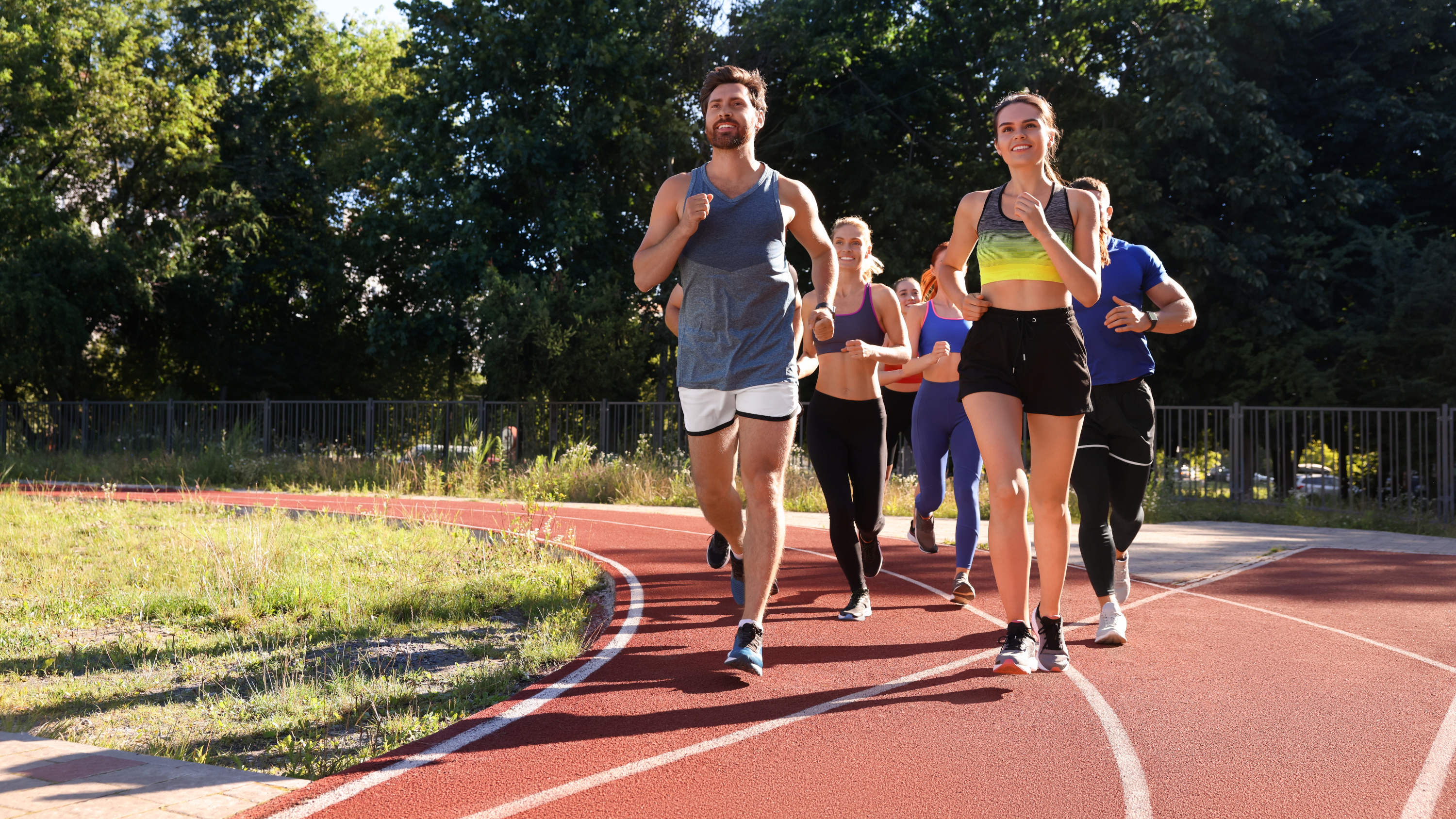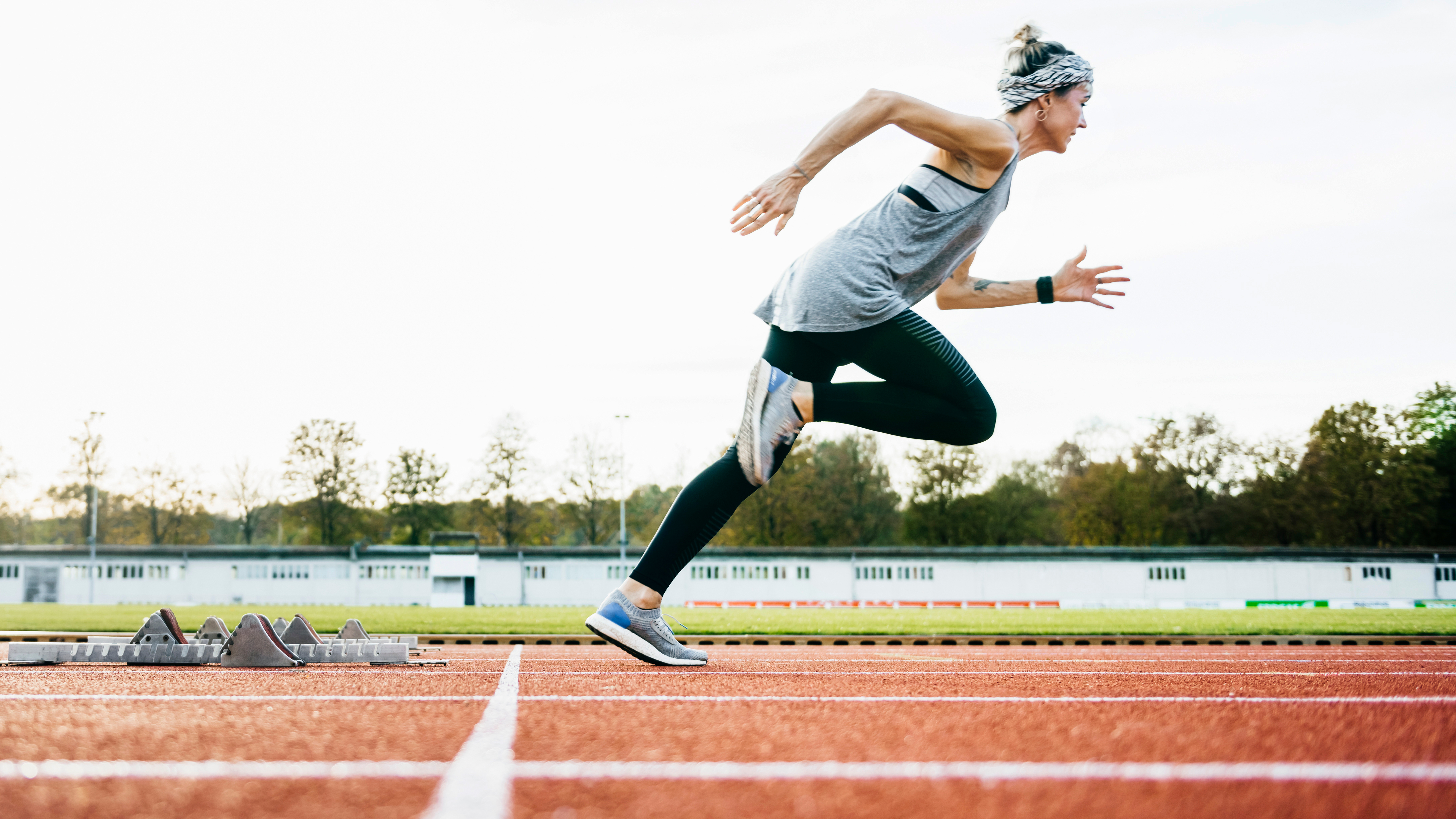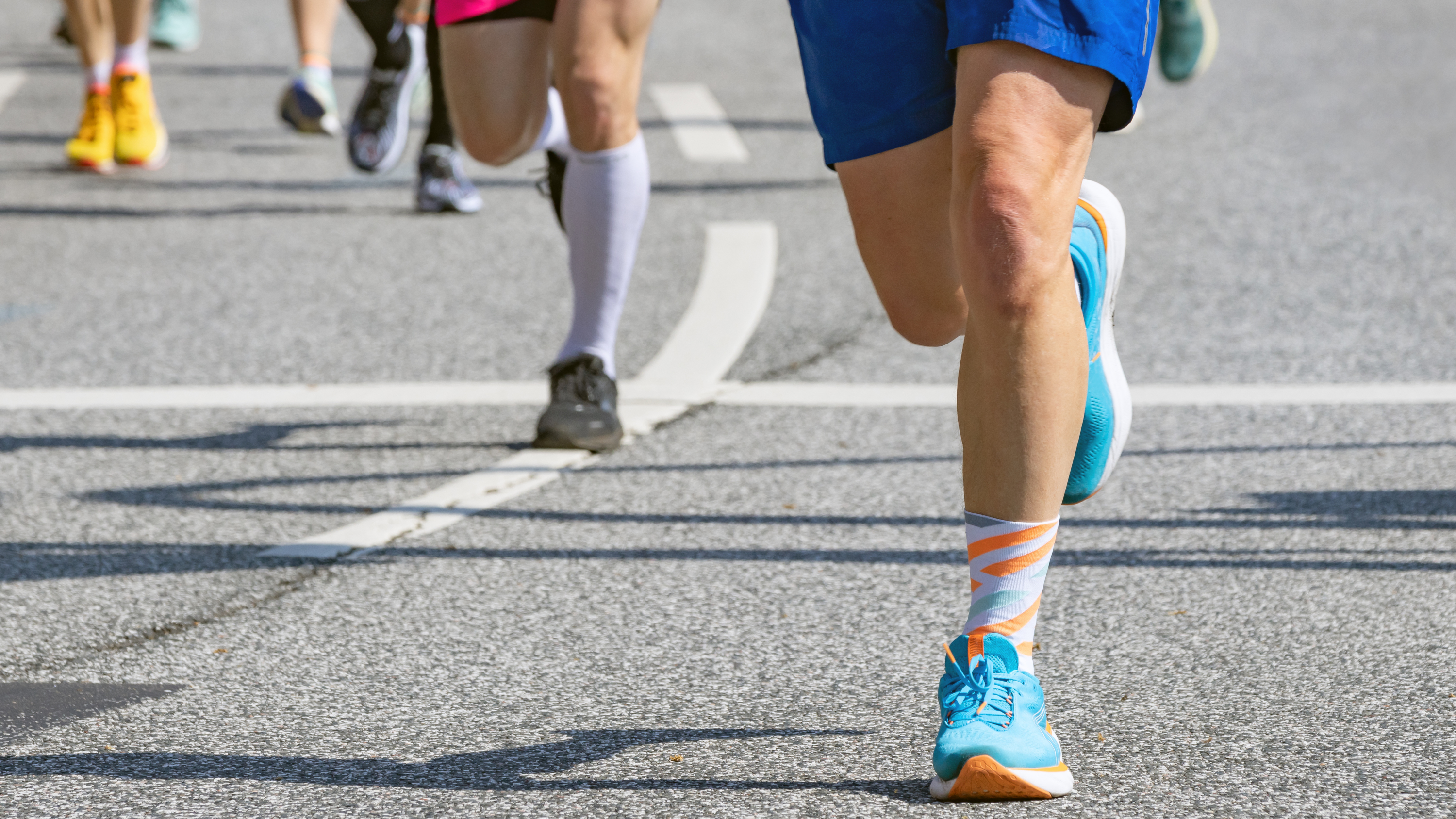Track running vs road running: Which is better for you?
Track running vs road running, is one better than the other?

Running is one of the simplest, most accessible forms of exercise out there but it can come in different forms depending on personal goals, preferences and circumstances. Two distinct categories among the different styles of running are track running and road running. While they both require you to put one foot in front of the other, the experience of running on each surface is considerably different.
Much like the treadmill vs running outside debate, there are pros and cons to both. To cut to the basics, track running takes place on a rubberized or all-weather track and is designed to provide consistent and cushioned footing. Whereas road running takes place on paved or unpaved roads with a harder feel but often provides better or at least more varied scenery.
According to Garmin's 2023 Connect Fitness Report, there was a significant 76% increase in track running activities, as indicated by the Global Garmin Connect user data. This suggests that more runners were spending time on the track last year, but why is this and should you be adding track runs to your training this year?
Keep reading to find out more.
The benefits of track running

Not only can running on a track make you feel like an Olympian racing toward an imaginary gold medal, but it also has some genuine performance benefits that are worth covering.
Easy to measure: Even if you have one of the best running apps providing you with a thorough plan for your next race, it still comes down to you to map out the routes that will tick off the miles in your training plan. If this isn't your strong point or you don't live near good running routes, then the track can come in handy. This is because a track is accurately measured, with most coming in at 400 meters (1/4 mile). Many runners prefer to use a track for their speed sessions because it's easier to work out precise distances, enabling them to hit specific targets for intervals and pace work with greater accuracy.
Easier to maintain pace: Getting your pace right is a tricky skill to master, especially if you train on your own or without one of the best running watches that uses GPS to track your pace. Throw in uneven terrains and inclines that come with road running and you will find it even hard to pace yourself. On the other hand, the smooth and level surface of the track will help you keep a consistent pace.
Sign up to get the BEST of Tom's Guide direct to your inbox.
Get instant access to breaking news, the hottest reviews, great deals and helpful tips.
Can be safer: All runners will face various obstacles in their training that can set them back from getting a run done. Whether that be bad weather making your usual running route very muddy and unsafe to run on without slipping, or the fewer hours of daylight that winter brings making you less visible on your runs and more susceptible to danger. Thankfully, tracks are often located in areas with sports facilities where there is a sense of community or at least the presence of other runners. Tracks are typically kept well-lit too, making it safer to run there in the evening or early hours of the morning.
The end is always in sight: No matter the distance you are running on the track, the end is always in sight which can make finishing whatever distance you are running a lot easier. This isn't always the case with road running and your brain can start to talk itself out of continuing to the end. But the catch-22 here is that you could do all your training on a track and then struggle when you enter in a road running event and lose all sense of how far you have to go. So, it is a wise idea to mix up your running surfaces.
The benefits of road running
Although you may come across some unexpected bumps and inclines in your road runs, the diversity of scenery and routes that you encounter can make up for it. We can't forget the physical benefits too, which include:

It works different muscles: Although the track can be a little more reliable in some aspects, the different and unpredictable terrain of the roads requires additional stabilization from your muscles and can help improve mobility in injury prone areas like your ankles.
It's more scenic: Road running lets you explore different neighborhoods, parks, and scenic routes. Enjoying nature and changing scenery can make the running experience more enjoyable and mentally stimulating, especially for longer distances. I remember when I did athletics as a kid and I used to dread when the coach shouted at us to do another lap around the same old track. Now I lap up being able to go for a run by the sea or through a park I've never been to before.
It's more convenient: The beauty of road running is that you can just step out the door and stride straight into your run. There is no getting to the venue, paying to use a track, and then having to travel home afterward.
Simulates race conditions: unless you are a track athlete most running races will be on the road. This means you will have to handle varied terrains, unpredictable weather conditions and some form of incline (albeit big or small) so road running in your training can work in your favor to better prepare your body and mind for what could hit you on the day.
Is track running easier than running outside?
Naturally, running on a track is easier because you can run on a consistently flat surface, which in theory is easier to maintain a steady pace. It also tends to have a more forgiving surface, making it gentler on your joints as you run. However, you could argue that although road running may not be as easy to train on, it can make race day a lot easier as you should be better prepared for the varying terrains and conditions that a road race brings.
While there isn't specific research out there on track versus road running, there is on trail running versus road running. One study found that out of trail running and road running, trail running can result in greater benefits for balance and leg strength improvements. It seems there is real benefits to running on varied terrains and rather than just commit to one kind, you should aim to mix up your runs and enjoy the benefits of all kinds of running including trail, treadmill, road and track.
Can you wear regular running shoes on for track running?
If you're an amateur runner or simply looking to add the odd track session into your training then, no, you don't need to buy a separate pair of shoes just for running on a track.
As long as you own a decent pair of the best women's running shoes or the best men's running shoes then you should feel just fine making your way around a track. Track running tends to involve more speed so the main thing to look out for is a lightweight running shoe, to avoid carrying around too much load when picking up your pace.
However, if you're looking to take track running more seriously and dip your toes into track racing, investing in a pair of spikes will offer an extra layer of grip and stability on the track and help shave some time off your PR (personal record).
More from Tom's Guide

Jessica has been a fitness writer at Tom’s Guide since 2023, bringing three years of experience writing about health, fitness, and the great outdoors. Her passion for exercise began during her childhood, where she spent weekends hiking and competing in local athletics club events. After earning a master’s degree in journalism from Cardiff University, Jessica found the perfect way to combine her love of storytelling and fitness into a career.
Jessica is passionate about testing fitness gear and tech, using her reviews to help readers make informed buying decisions. She ran her first marathon in April 2024, finishing it in 3 hours and 48 minutes. Through her training, she’s developed a deep understanding of what it takes to grow as a runner, from effective workouts and recovery techniques to selecting the right gear for every challenge.
When she’s not at her desk, Jessica enjoys spending time in the kitchen crafting new recipes, braving cold water swims and hiking.
